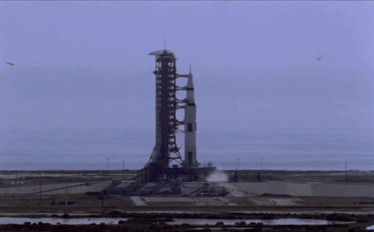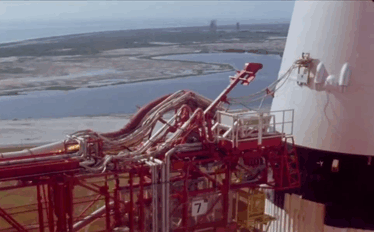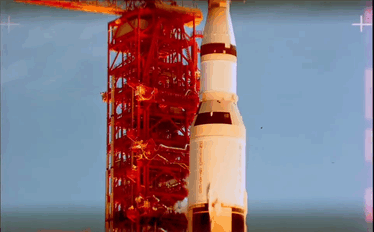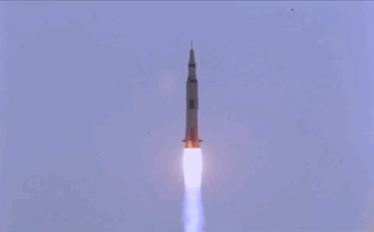New Pics Of Io Just Dropped
New pics of Io just dropped

More are over here at NASA's Juno probe site.
More Posts from Ad-astra-affecte-spe and Others

Ring of Fire October 2023 l Bray Falls


Neptune's rings & moon Triton © Voyager 2


A solar eclipse seen from space.





Apollo 11 Launch

“Drifting” by | André Brandt

Earth, which is about 898 million miles (1.44 billion kilometers) away in this image, captured by NASA's Cassini spacecraft 🚀


Corona Australis
Nebula is mostly hydrogen gas, and a small amount of metals (elements above helium) which tend to be covered as "Dust", but it's the dust that best reflect the light of the stars, and as the largest and most energetic of them are blue, you get these areas of blue haze. Hydrogen more often glows red when bombarded by UV light, the two colours together quite magical.

The area has a number of NGC objects 6726,6727,6729 but born of the same huge molecular cloud.
Our Milky Way has many such areas full of star birth, and as blue giants are not long lived, supernova and star death too.


Galaxies can merge, collide, or brush past one another — each of which has a significant impact on their shapes and structures. As common as these interactions are thought to be in the Universe, it is rare to capture an image of two galaxies interacting in such a visibly dynamic way. This image, from the NASA/ESA Hubble Space Telescope, feels incredibly three-dimensional for a piece of deep-space imagery.
The subject of this image is named Arp 282, an interacting galaxy pair that is composed of the Seyfert galaxy NGC 169 (bottom) and the galaxy IC 1559 (top).
Credits: ESA/Hubble & NASA, J. Dalcanton, Dark Energy Survey, J. Schmidt
-
 this-is-a-love-story-isnt-it reblogged this · 11 months ago
this-is-a-love-story-isnt-it reblogged this · 11 months ago -
 rekishi-aka reblogged this · 11 months ago
rekishi-aka reblogged this · 11 months ago -
 moodringsformushrooms reblogged this · 1 year ago
moodringsformushrooms reblogged this · 1 year ago -
 panthera-62 liked this · 1 year ago
panthera-62 liked this · 1 year ago -
 jurgenronaaz reblogged this · 1 year ago
jurgenronaaz reblogged this · 1 year ago -
 millionmovieproject reblogged this · 1 year ago
millionmovieproject reblogged this · 1 year ago -
 midnight-cowboy5okinawa liked this · 1 year ago
midnight-cowboy5okinawa liked this · 1 year ago -
 el-zorro-chile liked this · 1 year ago
el-zorro-chile liked this · 1 year ago -
 themightymidget04 liked this · 1 year ago
themightymidget04 liked this · 1 year ago -
 whackjobwednesday reblogged this · 1 year ago
whackjobwednesday reblogged this · 1 year ago -
 watermelon-shotput reblogged this · 1 year ago
watermelon-shotput reblogged this · 1 year ago -
 liho907lilo reblogged this · 1 year ago
liho907lilo reblogged this · 1 year ago -
 redvoidboi liked this · 1 year ago
redvoidboi liked this · 1 year ago -
 andrewagregory liked this · 1 year ago
andrewagregory liked this · 1 year ago -
 pinkninja236 reblogged this · 1 year ago
pinkninja236 reblogged this · 1 year ago -
 yronnia liked this · 1 year ago
yronnia liked this · 1 year ago -
 yronnia reblogged this · 1 year ago
yronnia reblogged this · 1 year ago -
 huff-le-puff-puff-pass liked this · 1 year ago
huff-le-puff-puff-pass liked this · 1 year ago -
 alternate-willow liked this · 1 year ago
alternate-willow liked this · 1 year ago -
 tatterdemalion-sprite liked this · 1 year ago
tatterdemalion-sprite liked this · 1 year ago -
 oneleggedostrich liked this · 1 year ago
oneleggedostrich liked this · 1 year ago -
 kazard reblogged this · 1 year ago
kazard reblogged this · 1 year ago -
 kazard liked this · 1 year ago
kazard liked this · 1 year ago -
 aflockofducks liked this · 1 year ago
aflockofducks liked this · 1 year ago -
 monstermilliemayhem reblogged this · 1 year ago
monstermilliemayhem reblogged this · 1 year ago -
 trigunotacureblogs reblogged this · 1 year ago
trigunotacureblogs reblogged this · 1 year ago -
 roosterbox reblogged this · 1 year ago
roosterbox reblogged this · 1 year ago -
 naminelily reblogged this · 1 year ago
naminelily reblogged this · 1 year ago -
 theowlishlibrarian reblogged this · 1 year ago
theowlishlibrarian reblogged this · 1 year ago -
 nkvictory reblogged this · 1 year ago
nkvictory reblogged this · 1 year ago -
 terraem reblogged this · 1 year ago
terraem reblogged this · 1 year ago -
 a-tired-goth liked this · 1 year ago
a-tired-goth liked this · 1 year ago -
 littleelectric reblogged this · 1 year ago
littleelectric reblogged this · 1 year ago -
 jaytherat-hometothereblog liked this · 1 year ago
jaytherat-hometothereblog liked this · 1 year ago -
 trigunotacu liked this · 1 year ago
trigunotacu liked this · 1 year ago -
 littleelectric liked this · 1 year ago
littleelectric liked this · 1 year ago -
 memetrash-coyote reblogged this · 1 year ago
memetrash-coyote reblogged this · 1 year ago -
 clovekat liked this · 1 year ago
clovekat liked this · 1 year ago -
 avellibelly liked this · 1 year ago
avellibelly liked this · 1 year ago -
 lazeecomet reblogged this · 1 year ago
lazeecomet reblogged this · 1 year ago -
 lazeecomet liked this · 1 year ago
lazeecomet liked this · 1 year ago -
 thesixthstar liked this · 1 year ago
thesixthstar liked this · 1 year ago -
 windypenguin reblogged this · 1 year ago
windypenguin reblogged this · 1 year ago -
 windypenguin liked this · 1 year ago
windypenguin liked this · 1 year ago -
 beingatoaster reblogged this · 1 year ago
beingatoaster reblogged this · 1 year ago

★•Astronomy, Physics, and Aerospace•★ Original and Reblogged Content curated by a NASA Solar System Ambassador
204 posts
